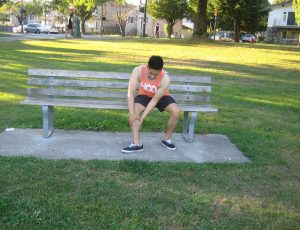Poor circulation in the legs can be caused by conditions such as atherosclerosis, infections, varicose veins and trauma. Poor circulation is inadequate flow of blood to an area in the body and causes reduced supply of oxygen to the foot.
Symptoms of poor circulation
- Pain, cramping, aching, numbness or fatigue in the leg, foot or buttocks while walking and disappears when resting.
- Difficulty in walking
- Reduced physical activities such as exercises
- When the condition becomes worse, there is severe pain while resting especially when sleeping. In this stage, the pain becomes worse when legs are elevated and improves when the legs are lowered down and sitting in a chair.
Pain, cramping, aching, numbness or fatigue in the leg, foot or buttocks while walking and disappears when resting. - The foot becomes cool, toenails become thick and the skin of the legs is thin and shiny and growth of hair is reduced.
- The toes are colored pale or bluish
- Erectile dysfunction in men in some cases
- Wounds in the legs cause severe pain and do not heal properly and sometimes progress to gangrene.
Treatment
- Perform aerobic activities such as brisk walking, swimming, bicycling to increase circulation of blood in the legs and the rest of the body.
- Use hydrotherapy which is a simple remedy in increasing blood flow in the legs. Soak the affected legs in hot water for at least 10-15 minutes to stimulate the dilation of small vessels near the surface of the skin and regulate the temperature of the body. After the hot water, immediately soak the affected area in cold water to make blood vessel to close and shunts the blood from the skin to maintain proper temperature of the body. A shunt is a hole or passage for proper movement of fluid from one area to another. Repeat performing this procedure for several times every day to increase the blood flow, improve nutrient and oxygen supply to the tissues of the body.
- Massage the affected area with poor circulation for proper blood and lymph flow. It also improves the ability of the body to supply nutrients and oxygen to the tissue and eliminate toxic metabolic by-products.
- Wear compression stockings to stabilize the tissues in the legs and for proper blood circulation in the area.
- Minimize consumption of salt to prevent buildup of water and swelling which places significant pressure on the veins and result to poor circulation.
- Drink plenty of fluids especially water to flush out excess salts in the body. Drink at least 2 liters or more to prevent dehydration.
- Maintain a healthy weight for proper flow of blood in the body. Being overweight, places plenty of stress on the circulatory system.
- Eat a well-balanced diet that includes a variety of fresh fruits and vegetables, lean meat, whole grains. And fibers from nuts, oatmeal, legumes and other fiber-rich foods.
- Perform regular exercises such as running, walking, swimming, biking and hiking that keeps the feet moving. Walking for at least 30 minutes improves health of the legs and stimulates circulation of blood.

